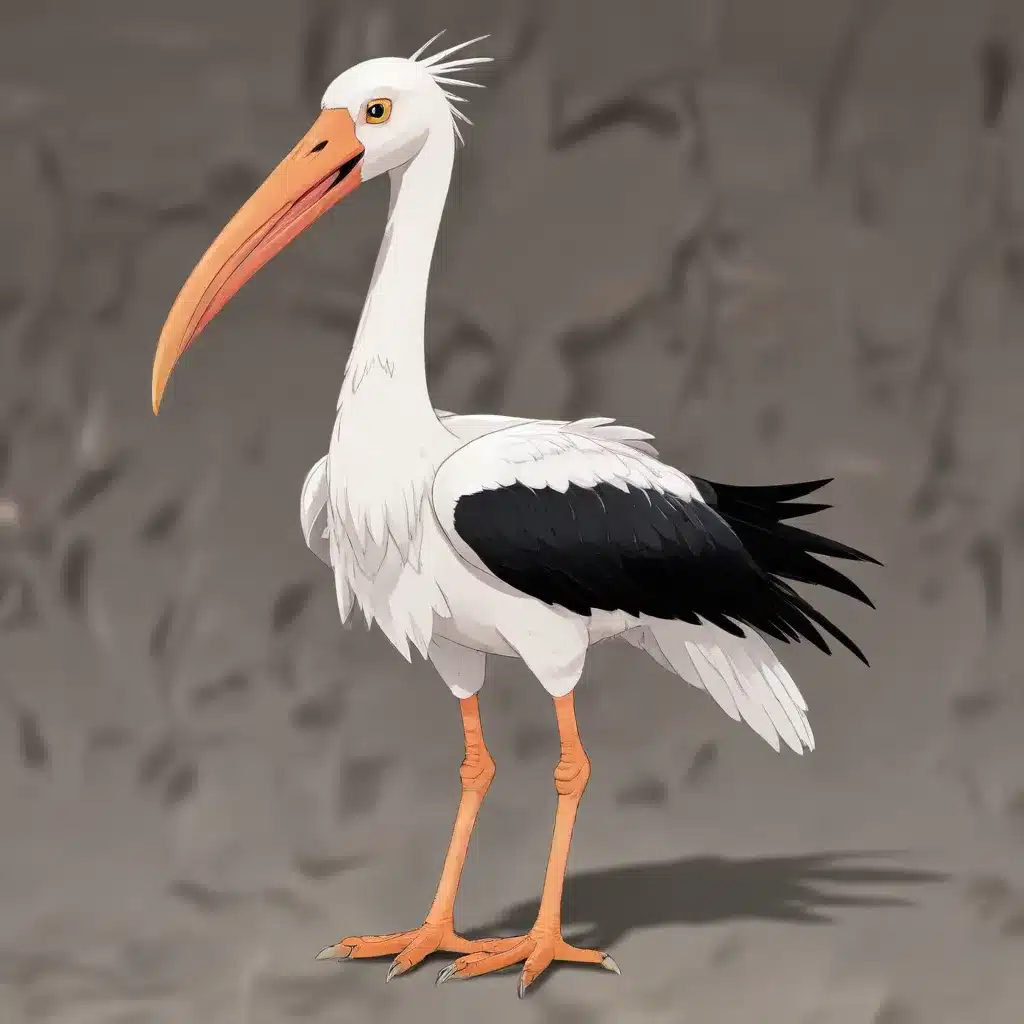
Avian Species
Storks
The Oriental Stork, or Ciconia boyciana, is a majestic member of the stork family Ciconiidae. These impressive birds stand tall at over a meter in height, with a wingspan that can reach over 2 meters wide. Characterized by their striking white plumage and bright red legs, Oriental Storks are truly a sight to behold.
As apex predators in their wetland habitats, these omnivorous waders play a crucial role in maintaining the delicate balance of ecosystems. Their diverse diet includes frogs, fish, insects, small rodents, and even other smaller bird species. With their keen eyesight and sharp beaks, Oriental Storks skillfully hunt and capture their prey.
Cranes
While the Oriental Stork may share some visual similarities with cranes, they belong to the distinct stork family. Cranes, such as the iconic Sandhill or Whooping Cranes, are known for their impressive courtship dances and loud, trumpeting calls. In contrast, storks like the Oriental Stork have a more subdued vocalizations, often relying on bill-clattering and grunts to communicate.
Herons
Another group of wading birds that may be confused with the Oriental Stork are the herons. While both occupy similar wetland environments, herons tend to have more slender, elongated necks and bodies compared to the stockier storks. Herons also often exhibit distinct coloration patterns, such as the striking gray and white plumage of the Great Blue Heron, rather than the pure white of the Oriental Stork.
Kemono Friends Universe
Japari Library
The Oriental Stork has become a beloved character within the expansive Kemono Friends universe, with its detailed profile featured on the Japari Library wiki. This comprehensive resource delves into the unique design, backstory, and abilities of the Oriental Stork Friend, offering a deeper appreciation for this majestic avian species.
Kemono Friends Franchise
The Kemono Friends franchise has captivated audiences worldwide with its charming depiction of anthropomorphized animal characters. The Oriental Stork, with its striking appearance and gentle demeanor, has become a fan-favorite among the diverse cast of Kemono Friends. Across the various media formats, including the original mobile game, anime series, and the Kemono Friends Pavilion, the Oriental Stork has continued to enchant viewers with its endearing personality.
Fictional Creatures
While the Oriental Stork is a real-world species, the Kemono Friends franchise has also introduced a wealth of imaginative, fictional animal Friends. These unique creatures, often blending the characteristics of multiple species, offer a whimsical and creative exploration of the natural world. The inclusion of the Oriental Stork alongside these fantastical beings highlights the versatility and broad appeal of the Kemono Friends universe.
Ornithological Concepts
Bird Taxonomy
The Oriental Stork, scientifically known as Ciconia boyciana, is a member of the Ciconiidae family, which encompasses the various stork species found around the world. This large wading bird is closely related to the more widely recognized White Stork (Ciconia ciconia), with which it was once considered a subspecies.
Migratory Patterns
The range of the Oriental Stork extends across Northeast Asia, including Japan, Manchuria (Northeastern China), Korea, and Siberia. These birds are known to be migratory, undertaking long journeys to escape the harsh winters of their northern breeding grounds. Their seasonal movements can span thousands of kilometers, as they seek out more temperate wetland habitats during the colder months.
Avian Habitat
Oriental Storks thrive in diverse wetland environments, such as marshes, coastal areas, and pond edges. These areas provide the perfect combination of shallow waters, lush vegetation, and abundant prey to sustain the storks’ foraging needs. The preservation and management of these vital habitats is crucial for the conservation of the Oriental Stork and other wetland-dependent species.
Cultural Representations
Japanese Mythology
In Japanese mythology, the Oriental Stork, or “Kounotori,” holds a special significance. These birds are often associated with longevity, good fortune, and the changing of the seasons. The sight of a returning Oriental Stork in spring is celebrated as a symbol of renewal and the cycle of life.
Symbolism in Art
The graceful silhouette and striking plumage of the Oriental Stork have long been a source of inspiration for Japanese artists. From delicate ink paintings to intricate woodblock prints, the stork’s image has been captured in a variety of traditional art forms. These depictions often showcase the bird’s elegant movements and its deep connection to the natural world.
Depictions in Media
The enduring popularity of the Oriental Stork has led to its widespread representation in various media, including the beloved Kemono Friends franchise. Within this whimsical universe, the stork Friend’s gentle demeanor and healing abilities have resonated with fans, further cementing the bird’s status as a cherished icon. The Kemono Friends series has undoubtedly played a significant role in introducing the Oriental Stork to a new generation of admirers.
At Mika Birds Farm, we are honored to have the opportunity to share our expertise and passion for these magnificent avian creatures. As experienced avian caretakers, we understand the importance of preserving and celebrating the natural world, particularly the unique species that grace our planet. By exploring the rich cultural heritage and ecological significance of the Oriental Stork, we hope to inspire our readers to develop a deeper appreciation for the wonders of the avian kingdom.
If you’re interested in learning more about the Oriental Stork or other fascinating bird species, be sure to check out the comprehensive resources available on the Japari Library wiki. And if you’re looking to add a feathered friend to your family, visit us at Mika Birds Farm, where we prioritize responsible adoption practices and the highest standards of avian care. Together, let’s celebrate the beauty and importance of these remarkable creatures.


